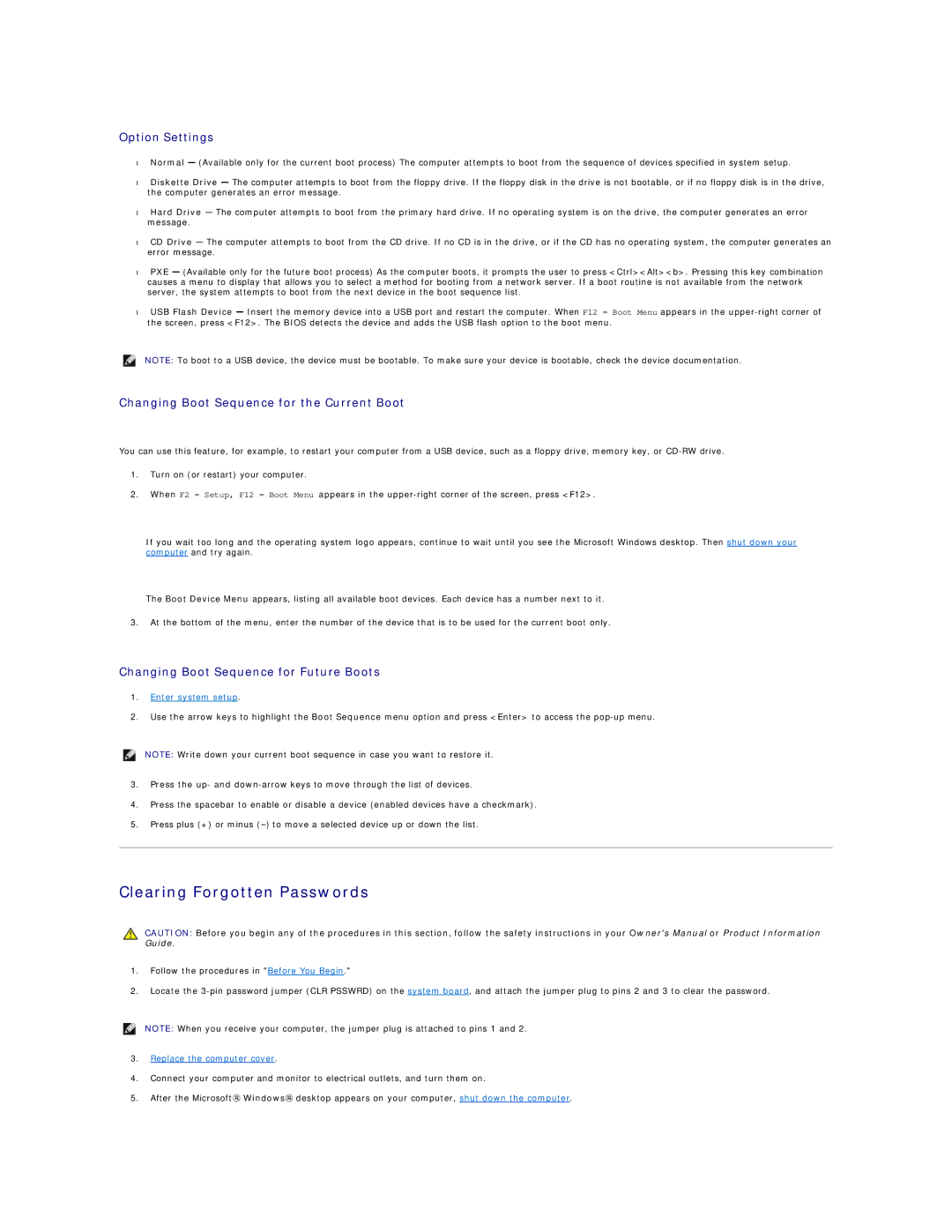
Option Settings
•Normal — (Available only for the current boot process) The computer attempts to boot from the sequence of devices specified in system setup.
•Diskette Drive — The computer attempts to boot from the floppy drive. If the floppy disk in the drive is not bootable, or if no floppy disk is in the drive, the computer generates an error message.
•Hard Drive — The computer attempts to boot from the primary hard drive. If no operating system is on the drive, the computer generates an error message.
•CD Drive — The computer attempts to boot from the CD drive. If no CD is in the drive, or if the CD has no operating system, the computer generates an error message.
•PXE — (Available only for the future boot process) As the computer boots, it prompts the user to press <Ctrl><Alt><b>. Pressing this key combination causes a menu to display that allows you to select a method for booting from a network server. If a boot routine is not available from the network server, the system attempts to boot from the next device in the boot sequence list.
•USB Flash Device — Insert the memory device into a USB port and restart the computer. When F12 = Boot Menu appears in the
NOTE: To boot to a USB device, the device must be bootable. To make sure your device is bootable, check the device documentation.
Changing Boot Sequence for the Current Boot
You can use this feature, for example, to restart your computer from a USB device, such as a floppy drive, memory key, or
1.Turn on (or restart) your computer.
2.When F2 = Setup, F12 = Boot Menu appears in the
If you wait too long and the operating system logo appears, continue to wait until you see the Microsoft Windows desktop. Then shut down your computer and try again.
The Boot Device Menu appears, listing all available boot devices. Each device has a number next to it.
3.At the bottom of the menu, enter the number of the device that is to be used for the current boot only.
Changing Boot Sequence for Future Boots
1.Enter system setup.
2.Use the arrow keys to highlight the Boot Sequence menu option and press <Enter> to access the
NOTE: Write down your current boot sequence in case you want to restore it.
3.Press the up- and
4.Press the spacebar to enable or disable a device (enabled devices have a checkmark).
5.Press plus (+) or minus
Clearing Forgotten Passwords
CAUTION: Before you begin any of the procedures in this section, follow the safety instructions in your Owner's Manual or Product Information Guide.
1.Follow the procedures in "Before You Begin."
2.Locate the
NOTE: When you receive your computer, the jumper plug is attached to pins 1 and 2.
3.Replace the computer cover.
4.Connect your computer and monitor to electrical outlets, and turn them on.
5.After the Microsoft® Windows® desktop appears on your computer, shut down the computer.
